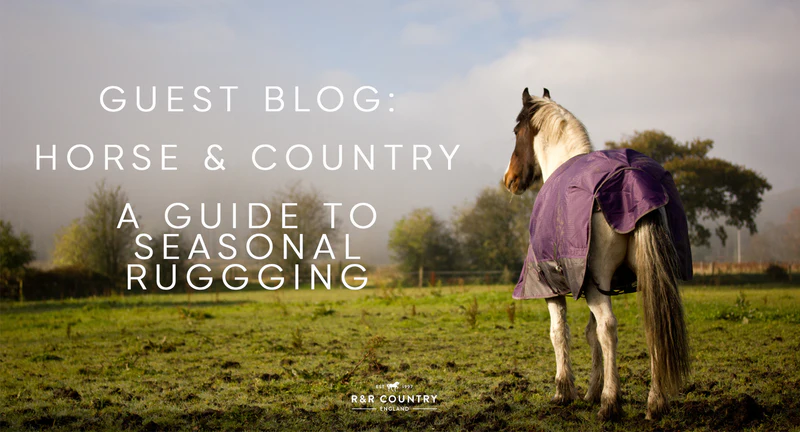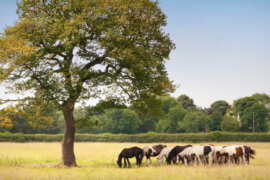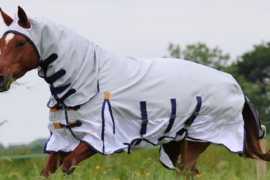Seasonal care guide: How to rug your horse according to the weather
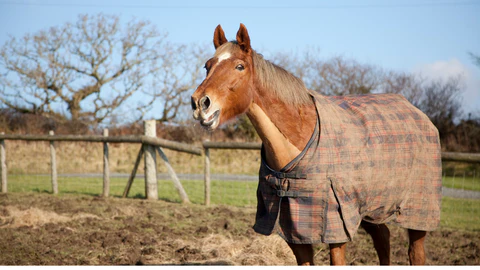
Every owner wants to keep their horse happy and healthy all year round, and a crucial part of equine care is enabling your horse to regulate their temperature. Below, Katie Allen-Clarke from Horse & Country shares her advice on how to rug your horse according to the weather.
When it comes to rugging your horses, it can be tricky to factor in the fluctuating temperatures and weather conditions that come with the changing seasons. Rugging will be different for every horse, as it depends on a host of factors like their breed, weight, coat, exercise or workload, and of course, the surrounding climate. To help you provide the best possible care for your horse, read on to find out how the seasons will affect your rugging routine.
Choosing the right rug for your horse
When picking out a rug, it’s important to remember a few key factors. Horses are much more resilient to the weather than we are, as their coat not only provides insulation from the cold but also produces oils that help with water resistance. So, while you may worry about your horse staying warm, for most horses rugging can wait until temperatures fall to approximately 5–10⁰C (which in the UK typically occurs from October through to February).
This being said, different breeds respond differently to the cold. For example, Arab and thoroughbred horses are known to have thinner winter coats and may therefore need to be rugged sooner. The same applies to horses that have had their natural coat fully clipped, such as for dressage or show jumping competitions.
However, age and health will also determine when your horse should be rugged: older, underweight, or ill horses should be rugged as soon as the colder months begin, because they find it harder to regulate their own body temperature. Providing them with the correct rug will therefore help to prevent excessive weight loss, or a flare-up of arthritis in older horses.
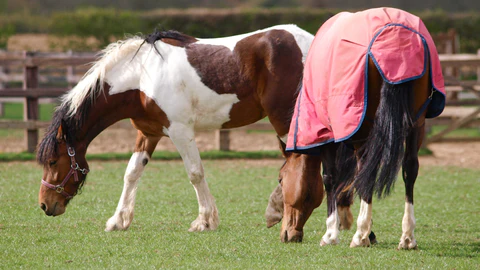
Measuring your horse’s rug
It’s important to find the right-sized rug for your horse so that it keeps them warm without causing irritation. When shopping for a new rug, use a flexible tape measure to measure horizontally from the centre of your horse’s chest to the end of the rump. Sizes tend to be rounded to the nearest three inches, but if you have a fairly large, muscular horse you can always allow an extra three inches to maximise their range of movement.
While UK rugs are measured horizontally from the centre of the chest, remember that European manufacturers take their measurements from the withers, horizontally across the back, and to the top of the tail. They also take their measurements in centimetres rather than the UK’s inches and centimetres.
Whichever variety you opt for, the front of the rug should sit around three inches in front of the withers and you should be able to fit your whole hand down the front of it. Any tighter and this can restrict your horse’s natural movement. When checking the straps, ensure that the hind leg straps cross into a figure of eight underneath the stomach, and check that there is a comfortable hand-width between each strap and the horse’s legs and belly.
Tailoring your rugging routine to the seasons
When autumn begins and leaves start to turn, it’s wise to wash your horse’s rugs and ensure that they still provide a comfortable, correct fit — this is particularly important if your horse is still growing or has lost or gained weight since last winter. When you start rugging in late autumn and throughout the winter, be sure to opt for high-denier varieties that have a medium to heavy fill (meaning they have a weight of 150–300+ grams). As discussed above, the denier and fill required will depend on their weight, health, age, and breed. Be careful not to opt for something too heavy, as this will place extra stress on the horse as they continually try to cool their core down. Similarly, it’s important to remove their rug daily to check for signs of rubbing or irritation
Generally, rugging during summer won’t be necessary. However, you may use a very lightweight, breathable summer rug if your field or paddock has no available shade, as it can prevent your horse from getting sunburned. However, it’s important for horses to get enough vitamin D via sun exposure to maintain strong bones, and rugs can also prevent them from cooling down via sweat. So, it’s best to only use a very lightweight rug if you have no shade and you’re concerned about them being exposed to the midday summer sun. Always make sure the rug isn’t secured too tightly, allows airflow to the skin, and is removed once they are out of direct sunlight.
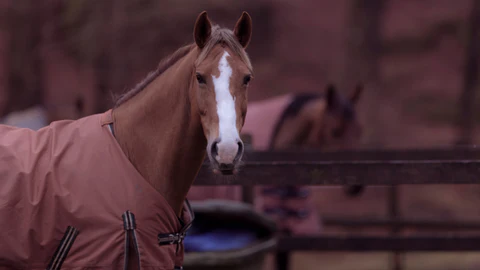
Preparing your stables for each season:
As well as making sure you find the right rug for your four-legged friend, it’s important to keep a close eye on the condition of their stables when the seasons start to change. This helps your horse stay comfortable and regulate their body temperature more efficiently.
Summer
While winter might pose a few more practical challenges, you should prepare your stables for warmer weather too. Set time aside to do a spring clean, which should include sweeping out and hoovering the stalls to remove old straw, feed, or cobwebs and power washing the floors (along with your rubber stable mats, if you use them). This not only starts the summer off with a clean slate but also prevents your horse from contracting any respiratory issues from a humid, musty stable. Be sure that your stable and paddock have plenty of ventilation and shade, and if temperatures really soar, add fans to your stables to keep your horses cool.
Winter
When temperatures start to drop in autumn and reach their lowest in winter, it’s crucial that you are prepared for this change in the seasons and attend to your stables accordingly. Firstly, be sure to stock up on essential supplies like hay, feed, saltlicks, and water ready for the cold weather. Your horse will inevitably spend more time in the stables during shorter, darker winter days, so you’ll want to make their surroundings as comfortable and well-stocked as possible.
It’s important to make any necessary repairs to your stables before winter, such as any broken bulbs, leaky ceilings, or doors and windows that let in a draught. Similarly, take the time to check on the fencing around your field or paddock before the cold sets in, as making repairs like adding new fence posts is much more difficult with frozen ground. Make sure maintenance like this is all done by early autumn at the latest, as winter horse care is all about preparing well in advance.
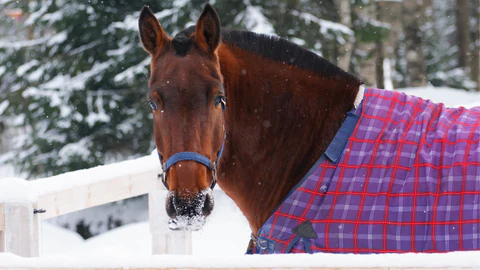
As an outdoor pursuit by nature, caring for horses depends greatly on the weather. So, use these top tips from the experts to keep your horse happy and healthy all year round. For more news, events, and updates, be sure to check out the R&R Country blog.

